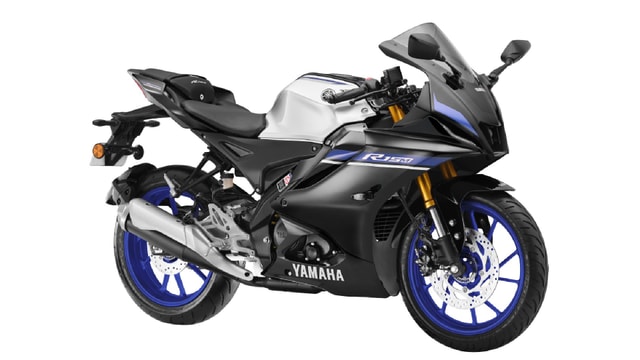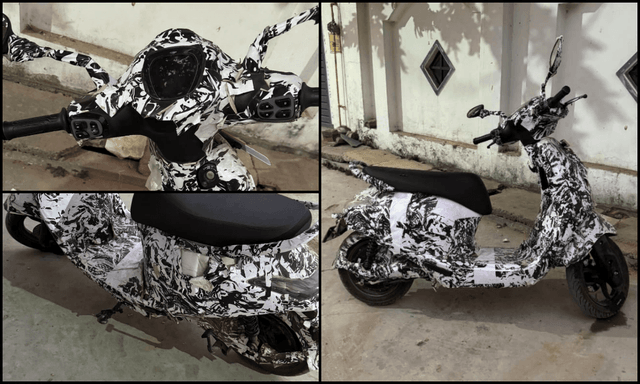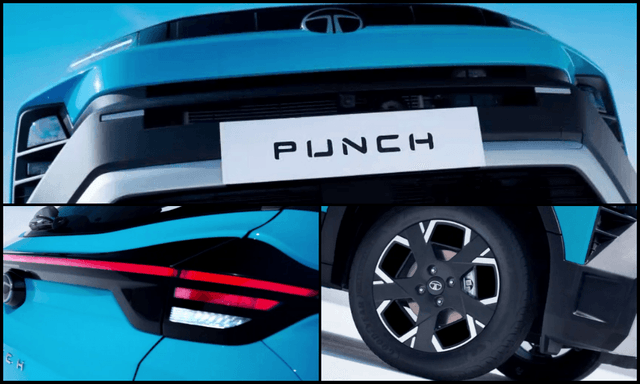Ford Files Patent For Convertible Off-Roaders With Standing Controls

- Ford patents technology for standing controls in convertible off-roaders.
- Advanced driver detection system ensures driver presence in the “driving zone” using cameras and sensors.
- Secondary control system enables standing or leaning, prioritizing safety in slow-speed off-roading.
Ford has recently filed a patent that introduces a new technology allowing drivers to stand up and operate their convertible off-roaders using a secondary set of controls. The patent hints towards the Bronco, Ford’s convertible off-roader, highlighting the need for certain off-roading scenarios where the driver must stand up or lean out of the vehicle to ensure safety.
Also Read: Lucid CEO Raises Concerns Over Car Manufacturers' Adoption of Tesla's Charging Standard
Off-roading often poses challenges in terms of limited visibility, especially when navigating over boulders. In such situations, leaning out of the car or standing up can provide a better view of the clearance and the chosen line. However, this can result in the driver losing access to primary controls like the throttle or brakes.
Ford addresses this issue by proposing an advanced driver detection system that goes beyond a simple seat sensor. The system utilizes various technologies such as cameras, LiDAR, ultra-wideband radar, phone-as-a-key, or proximity sensors to detect the driver’s presence within a designated “driving zone.” For instance, a camera mounted on the instrument cluster can detect the driver’s face. The objective is to ensure the presence of a driver within the driving zone so that safety and assistance features, like shift-to-park, hill park assist, traffic jam assist, and trail control, remain active.
A camera mounted on the instrument cluster can detect the driver’s face
The proposed system enables the driver to access a secondary control system designed for specific use cases, such as standing or leaning. To maintain a certain level of safety, Ford emphasizes that this system would operate within clearly defined boundaries, restricting high-speed activities like drifting while standing up. Ford sets a baseline of 3 mph as the maximum allowable speed, indicating that this technology is primarily intended for slow-speed off-roading. The system would likely integrate into Ford’s GOAT (Go Over Any Thing) off-road driving system, which is renowned for its capabilities.
The secondary controls would combine microsensors to manage speed and torque with a primary control, such as the steering wheel. For instance, drivers could keep one hand on the top of the steering wheel while controlling the throttle through a touch-sensitive panel on the windshield or through wearable devices. The specific placement of these secondary controls has yet to be determined and can vary based on individual preferences.
Also Read: Mercedes-Benz Partners With Tesla To Integrate NACS Charging Ports Into Its Lineup
In conclusion, Ford's patent introduces a potential game-changer for convertible off-roaders. The advanced driver detection system and secondary controls address challenges in off-roading scenarios where drivers stand up or lean out. It's important to note that this technology is intended for slow-speed off-roading within defined boundaries, not high-speed manoeuvres.
Latest News
 Carandbike Team | Jan 5, 2026Yamaha R15 Range Offered With Rs 5,000 DiscountAs part of Yamaha’s 70th anniversary celebrations, the brand has slashed prices for the R15 model range.2 mins read
Carandbike Team | Jan 5, 2026Yamaha R15 Range Offered With Rs 5,000 DiscountAs part of Yamaha’s 70th anniversary celebrations, the brand has slashed prices for the R15 model range.2 mins read car&bike Team | Jan 4, 2026Auto Sales December 2025: Mahindra Edges Out Tata To No. 2, Hyundai Drops To Fourth In Domestic SalesMaruti Suzuki remained firmly in the lead with domestic sales north of 1.7 lakh units - a 37 per cent sales growth year-on-year.1 min read
car&bike Team | Jan 4, 2026Auto Sales December 2025: Mahindra Edges Out Tata To No. 2, Hyundai Drops To Fourth In Domestic SalesMaruti Suzuki remained firmly in the lead with domestic sales north of 1.7 lakh units - a 37 per cent sales growth year-on-year.1 min read Jaiveer Mehra | Jan 4, 2026Tata Punch Facelift To Get Turbo-Petrol Engine OptionNew teaser confirms big change in powertrain line-up for the Punch micro SUV.4 mins read
Jaiveer Mehra | Jan 4, 2026Tata Punch Facelift To Get Turbo-Petrol Engine OptionNew teaser confirms big change in powertrain line-up for the Punch micro SUV.4 mins read Jaiveer Mehra | Jan 4, 2026Mahindra XUV 7XO India Launch Today: Here’s What We Know So FarThe facelift to the popular XUV 700, the 7XO will arrive with notable design and tech updates, though engine options are expected to stay unchanged.3 mins read
Jaiveer Mehra | Jan 4, 2026Mahindra XUV 7XO India Launch Today: Here’s What We Know So FarThe facelift to the popular XUV 700, the 7XO will arrive with notable design and tech updates, though engine options are expected to stay unchanged.3 mins read car&bike Team | Jan 3, 2026New Bajaj Chetak Spotted Ahead Of LaunchFresh images of the new Chetak continue to showcase a hub-mounted electric motor among other changes.2 mins read
car&bike Team | Jan 3, 2026New Bajaj Chetak Spotted Ahead Of LaunchFresh images of the new Chetak continue to showcase a hub-mounted electric motor among other changes.2 mins read car&bike Team | Jan 3, 2026Tata Punch Facelift Teased Ahead Of Launch On January 13The teaser images focus solely on the exterior, marking the first substantial update for the Punch since it was introduced in 2021.2 mins read
car&bike Team | Jan 3, 2026Tata Punch Facelift Teased Ahead Of Launch On January 13The teaser images focus solely on the exterior, marking the first substantial update for the Punch since it was introduced in 2021.2 mins read
 Amaan Ahmed | Jan 3, 2026VLF Mobster 135 300 KM Review: Fun But FlawedA 125 cc scooter with Italian design and Chinese genes is a rare combination, and while some may be tempted to dismiss it because of its origins, the VLF Mobster shows 125s can also be exciting – but not without compromises.1 min read
Amaan Ahmed | Jan 3, 2026VLF Mobster 135 300 KM Review: Fun But FlawedA 125 cc scooter with Italian design and Chinese genes is a rare combination, and while some may be tempted to dismiss it because of its origins, the VLF Mobster shows 125s can also be exciting – but not without compromises.1 min read Preetam Bora | Dec 30, 2025TVS Orbiter Review: Real-World Performance and Range TestedThe TVS Orbiter is a promising electric scooter promising decent range, practicality and pricing. But is there any reason to avoid it? We spent a few days getting to know it better.9 mins read
Preetam Bora | Dec 30, 2025TVS Orbiter Review: Real-World Performance and Range TestedThe TVS Orbiter is a promising electric scooter promising decent range, practicality and pricing. But is there any reason to avoid it? We spent a few days getting to know it better.9 mins read Jafar Rizvi | Dec 24, 2025MG Windsor EV 38 kWh Long-Term Report: IntroductionThe Windsor EV has joined our garage, and before it settles into daily duty, I took it out to get a sense of what living with an electric car is like.4 mins read
Jafar Rizvi | Dec 24, 2025MG Windsor EV 38 kWh Long-Term Report: IntroductionThe Windsor EV has joined our garage, and before it settles into daily duty, I took it out to get a sense of what living with an electric car is like.4 mins read Seshan Vijayraghvan | Dec 23, 20252026 Kia Seltos Review: Formula Is Spot On, But Is The Timing Right?The 2nd-gen Kia Seltos has arrived, but it has the challenge of facing strong rivals like the Victoris and Sierra. The question is simple - Does it still have what it takes?9 mins read
Seshan Vijayraghvan | Dec 23, 20252026 Kia Seltos Review: Formula Is Spot On, But Is The Timing Right?The 2nd-gen Kia Seltos has arrived, but it has the challenge of facing strong rivals like the Victoris and Sierra. The question is simple - Does it still have what it takes?9 mins read car&bike Team | Dec 26, 2025Tata Punch EV Long-Term Second Report: Highway Performance, Pros & ConsAfter a week of living with the Tata Punch EV Long Range—including a proper Mumbai-Nashik highway test—we've learned what this little electric SUV is really made of.1 min read
car&bike Team | Dec 26, 2025Tata Punch EV Long-Term Second Report: Highway Performance, Pros & ConsAfter a week of living with the Tata Punch EV Long Range—including a proper Mumbai-Nashik highway test—we've learned what this little electric SUV is really made of.1 min read
























































































































